Scuba Diving
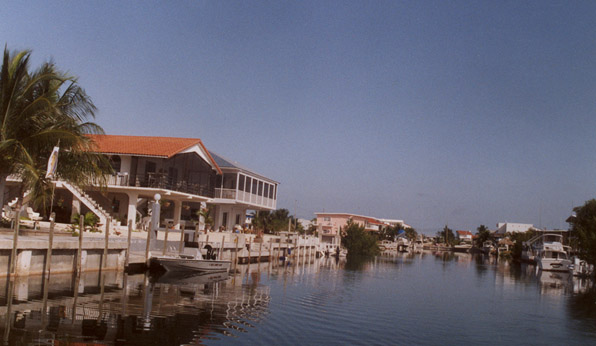
On a beautiful morning we head out down the canal from Sherry's house (the red-roofed one). From there you can easily go to either the Atlantic or the Gulf side. On the first day we went to the Gulf side.
Twin Peaks Reef
September 2
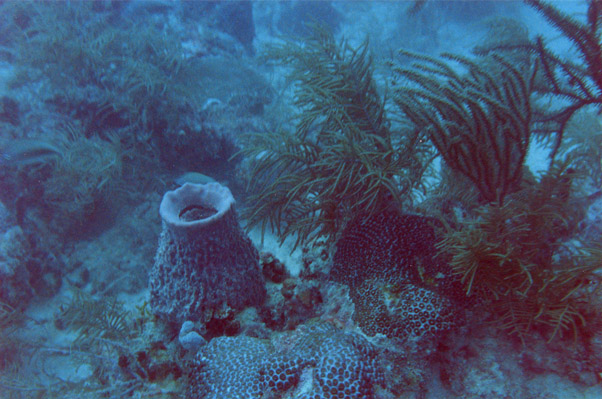
September 2. Sponges and sea fans abounded on the Twin Peaks Reef on the Gulf Side. At 80 feet there is a lot of blue from the water - these shots are taken without flash, so they represent more nearly what the eye actually sees at that depth.

Alligator Rocks Reef
September 5

On Alligator Rocks Reef on the Atlantic side we found a classic example of a stinging coral, above. If you touch it, your skin will sting for hours. Note the small orange plume worm on one of the blades at the far right. These pictures were shot with flash, so the red tones are more brilliant. There are also a couple of nice sea fans in this picture.

This large sea fan has a yellow shellfish near its base.
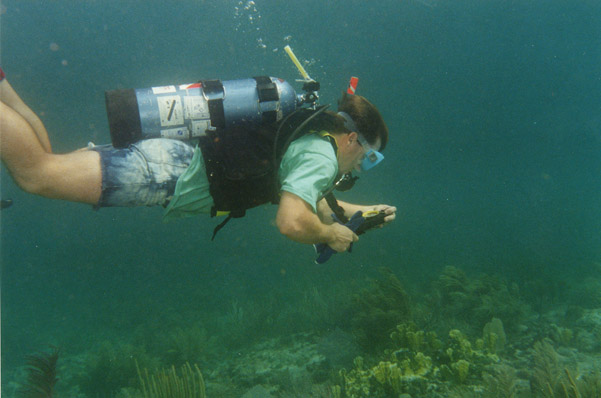
Mark cruises over shallow, well-lighted Alligator Rocks Reef at the edge of Pennekamp Park.
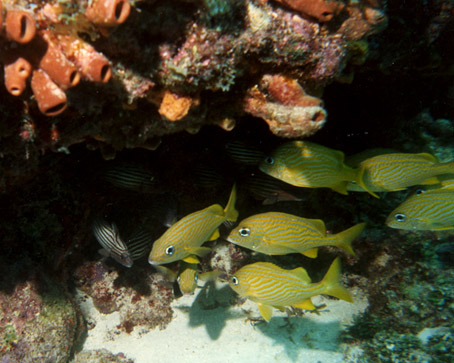 | Grunts and highhats hide under a ledge. I saw more highhats together here than I had seen before. I have usually seen them alone over the reef. |
The grunts gather among the seafans and coral during the day. | 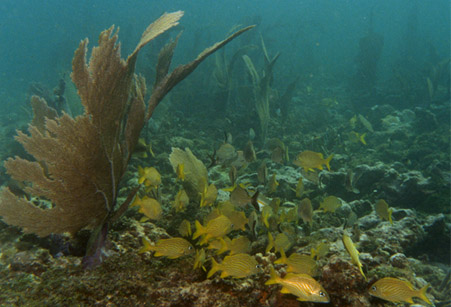 |
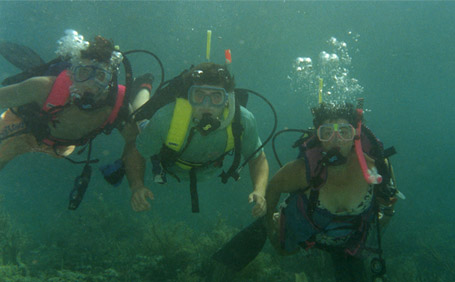 | Jeff, Mark and Sherry hanging out above Alligator Rocks Reef. Below are examples of the sea life we saw there. |
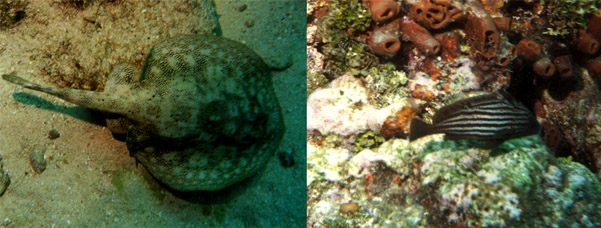
Spotted Stingray Highhat
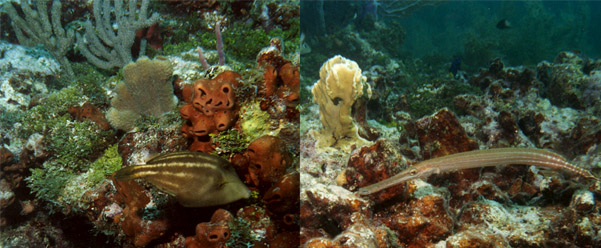
Filefish Trumpetfish

Spotfin butterflyfish Moray Eel
 | Stoplight parrotfish, juvenile phase at left. The terminal phase of the stoplight parrotfish is shown below. |
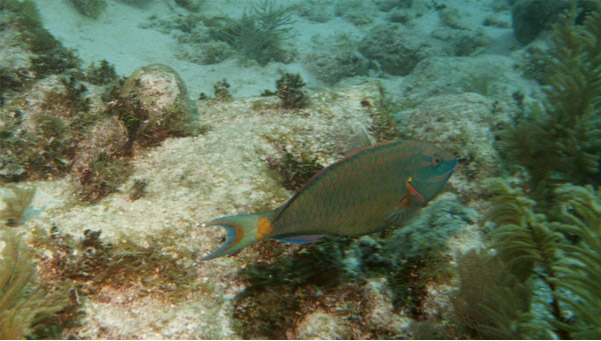
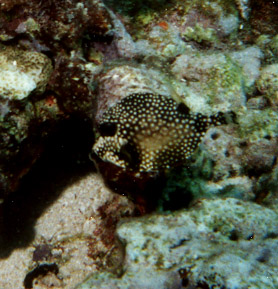 | The trunkfish shown at left is small and weird. It has a triangular crosssection to its body which can be likened to a triangular turtle shell. It is only about 5 inches long. The scrawled filefish below is large and weird. It is 18-20" long and has a very thin body, sort of like a file. |
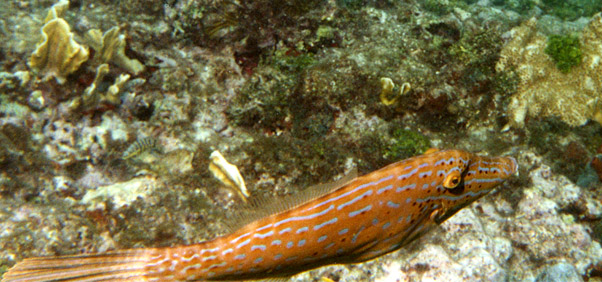
Caloosa Rocks Reef
September 5
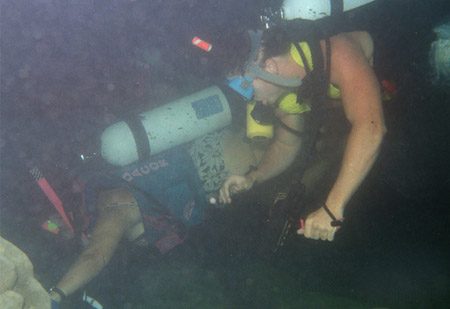 | On this late afternoon dive, Sherry and Mark are headed for the bottom to hunt for lobster around an isolated coral head. |
There were three spiny lobsters in this one hole in the reef. | 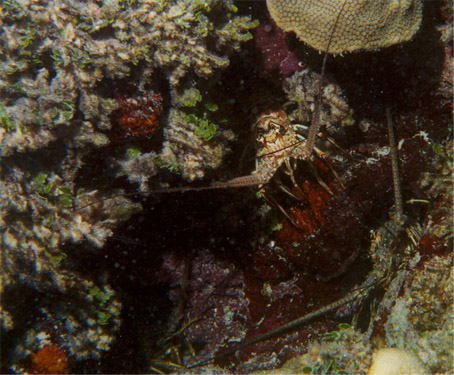 |
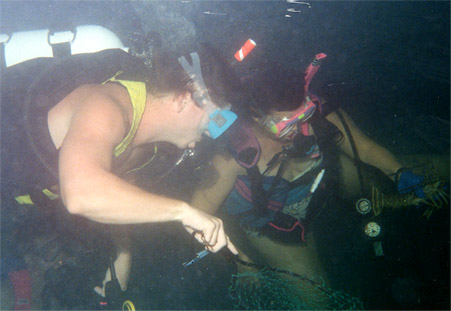 | Their lobster hunt was successful and they bring this spiny lobster up out of its hole. |
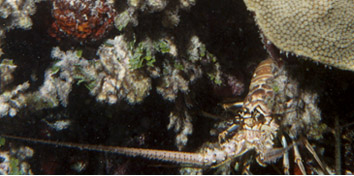 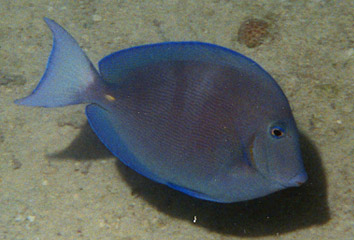 | 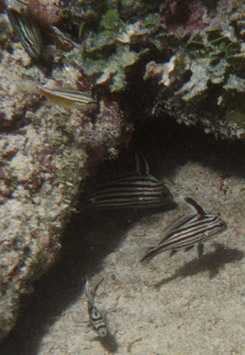 |
This large gray angelfish hung around with us. They tend to be quite friendly. | 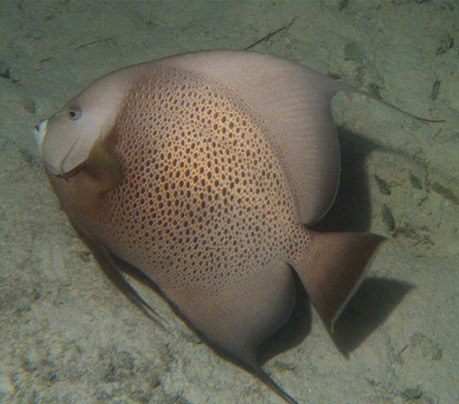 |
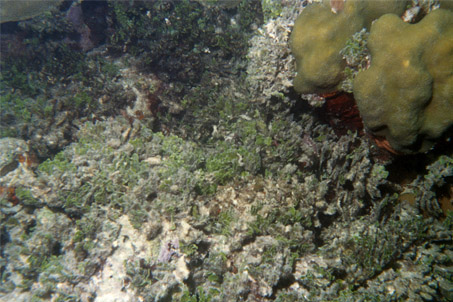 | I'll bet you can't find the scorpion fish in this picture. He was so superbly camoflaged with the green debris from this coral head that you could hardly make him out when looking directly at him from two feet away. The only reason we discovered him was that he moved slightly. |
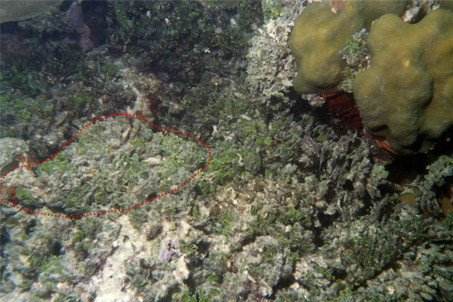 | Here's the same image with an outline around the general shape of the scorpion fish. We found another well-camoflaged scorpion fish in the Caymans, but not so well masked as this one. |
| Thanksgiving gathering |
1991